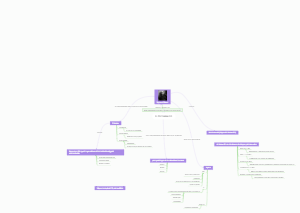MindMap Gallery Cognitive Behavioral Therapy (CBT)
- 4.2k
- 53
- 10
Cognitive Behavioral Therapy (CBT)
Cognitive Behavioral Therapy (CBT) Main ideas of this mind map: 1. Situation/Event/Trigger 2. Steps to apply CBT 3. Behaviors 4. Thoughts 5. Emotional 6. Situation/Event/Trigger Example: Unknown Dog running towards a child 7. Mayo Clinic about CBT
Edited at 2022-01-23 21:07:26- Recommended to you
- Outline
Conitive Behavioral Terapy (CBT)
1. Situation/Event/Trigger
Automatic Thought
Emotinal Reaction
Compentency Building
Feelings During
Feelings After
Behavior Reaction
Brain-Based Learning
Details
Environment
Events
Physiological Reaction/Sensation
Conitve Skills
Postivies and Negatives
Relationship Coaching
Postivies and Negatives
2. Steps to apply CBT
Step 1: Identifty the Situation/Event/Trigger
Step 2: Identify the Automatic Thought
Step 3: Mapping
Before: Emotion
Physiological response
Behavior
After: Emotion
Physiological response
Behavior
3. Behaviors
What actions happened?
running, seating, standing, etc
Whay body sensations experience?
1 Corinthians 3:16: "Don't you know that you yourselves are God's temple and that God's Spirit lives in you?" (NIV) God uses our body to help us understand what our brain may not understand. There are times our body will react to something well before our braind has a chance to process the event.
Body Response
heart racing, muscles tightening, sweating, cry, smiling, etc
Prompting, Shaping, Chaining, Reinforcement,Punishment,Fading, Stimulus control
Miltenberger (2016) when comes to CBT can use prompting, shaping, chaining, reinforcement/Punishment and stimulus control. Prompting is when a person has learned to understand "Thinking Errors" to better help with future stressful events. Shaping being used from the progress made from start of treatment to how treatment is going or progressed made. Chaining to learn new ways of thinking but as well to understand the body response at a faster rate to better thinking and reactions to a stressfull events. Along with making sure to use coping skills. Reindorcement/Punishment can be both postivie or negative as long as person receiving CBT is working on treatment may for example get a treat from the treat box after sessions. Or when person receiving CBT is not welling to work on treatment will not get to pick from treat box after sessions. Stimulus control in CBT the enviorment is less distracting then if a person were to have CBT treatment in a grocery store. Fading within CBT being that feeling once have learned that past thought no longer being so bothersome in future. Or even sessions went so well that the happy feeling is far more then the treat box.
4. Thoughts
What comes to mind?
Our thoughts are our own, it is not until we share them with others they are made known. Thoughts come in postivies and negatives. Thoughts can be shared with God at any given times as do not have to verbalize our thoughts for him to hear them. "Search me, God, and know my heart; test me and know my anxious thoughts. See if there is any offensive way in me, and lead me in the way everlasting." (Psalm 139:23-24, NIV) God designed our bodies for our brain to be just 18 inchs from our heart. It is in this great design that help us feel closer to God but as well our own emotions and thoughts.
See
What did see at that moment?
Taste
Could taste anything?
Smell
Could smell anything?
Touch
What did touch at that time?
Hear
What did hear at that time?
Thinking Errors
Are not facts
Not always true
Can be subjective
Can be biased by past experiences or by what hear, read, or see
5. Emotional
Feelings
How did make feel?
Labeling the emotion felt
Emption Scale: 0-10/ Red,Blue, Green or Combo
6. Situation/Event/Trigger Example: Unknown Dog running towards a child
Automatic Thought
Behaviors: Heart racing and trying to get to the child
Feelings: Scared
Thoughts: Dog going to bite
Behavior Reaction
Heart Racing
Running to get the child
Avoiding the dog
Panic
Emotinal Reaction
Scared for yourself and child
Physiological Reaction/Sensation
When reach child find the dog is friendly
May now have a child feeling scared now from your reactions before finding out he dog was friendly
7. Mayo Clinic about CBT
Overview:
Form of talk therapy/psychotherapy
Used to treat mental health disorders such as depression, PTSD, eating disorders
Don't always have to have mental disorder can be used to better handle stressful life events
Why it's done:
Quickly help identify and cope with challenges
Fewer sessions then other types of treatments
Once learn in a structure enviorment can be contuied use on own
Understand better thoughts to behaviors and emotions
Prevents relapse
Learn coping skills for future use
Risk:
Little Risk
Can be emotionally uncomfortable at times
Can bring up new emotions
How to prepare
Find a therapist
Emplyers may even offer referrals
Referral through Doctor, health insurance, friend, or other trusted source
Look for one on own
Understand the costs
Insurence covered
Pay out of pocket
Review concerns
Make a list of concerns
What want to work on
References:
1. Giglio, L., Lucado, M., Piper, J., Zacharias, R. K., Alcorn, R. C., Zondervan Publishing House (Grand Rapids, Mich, Biblica, I., & Passion Publishing. (2016). The Jesus Bible : sixty-six books. one story. all about one name. Published By Zondervan. 2. Mayo Clinic. (2017). Cognitive Behavioral Therapy. Mayoclinic.org. https://www.mayoclinic.org/tests-procedures/cognitive-behavioral-therapy/about/pac-20384610 3. Miltenberger, R. G. (2016). Behavior modification: Principles and procedures (6th ed.).









